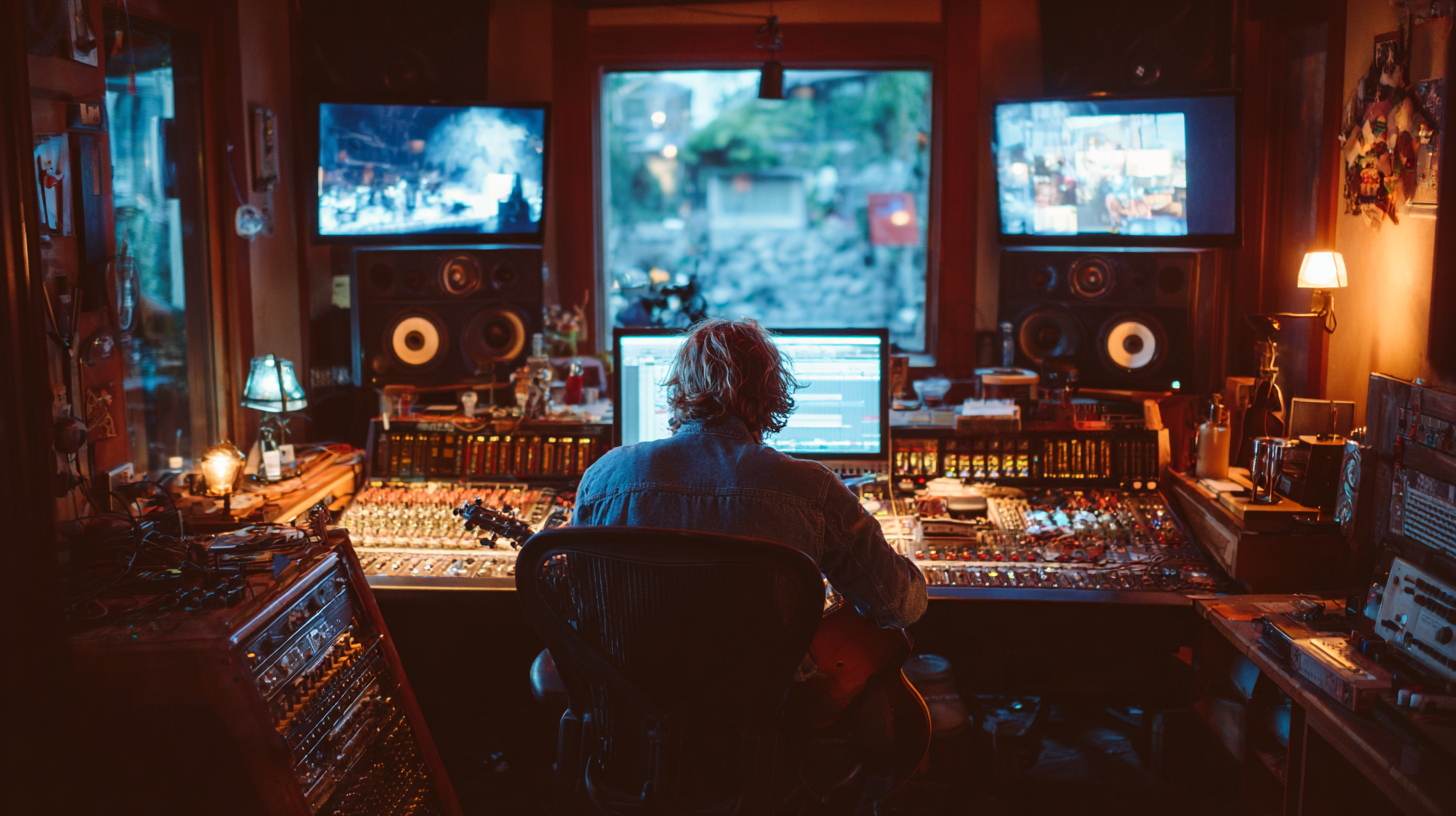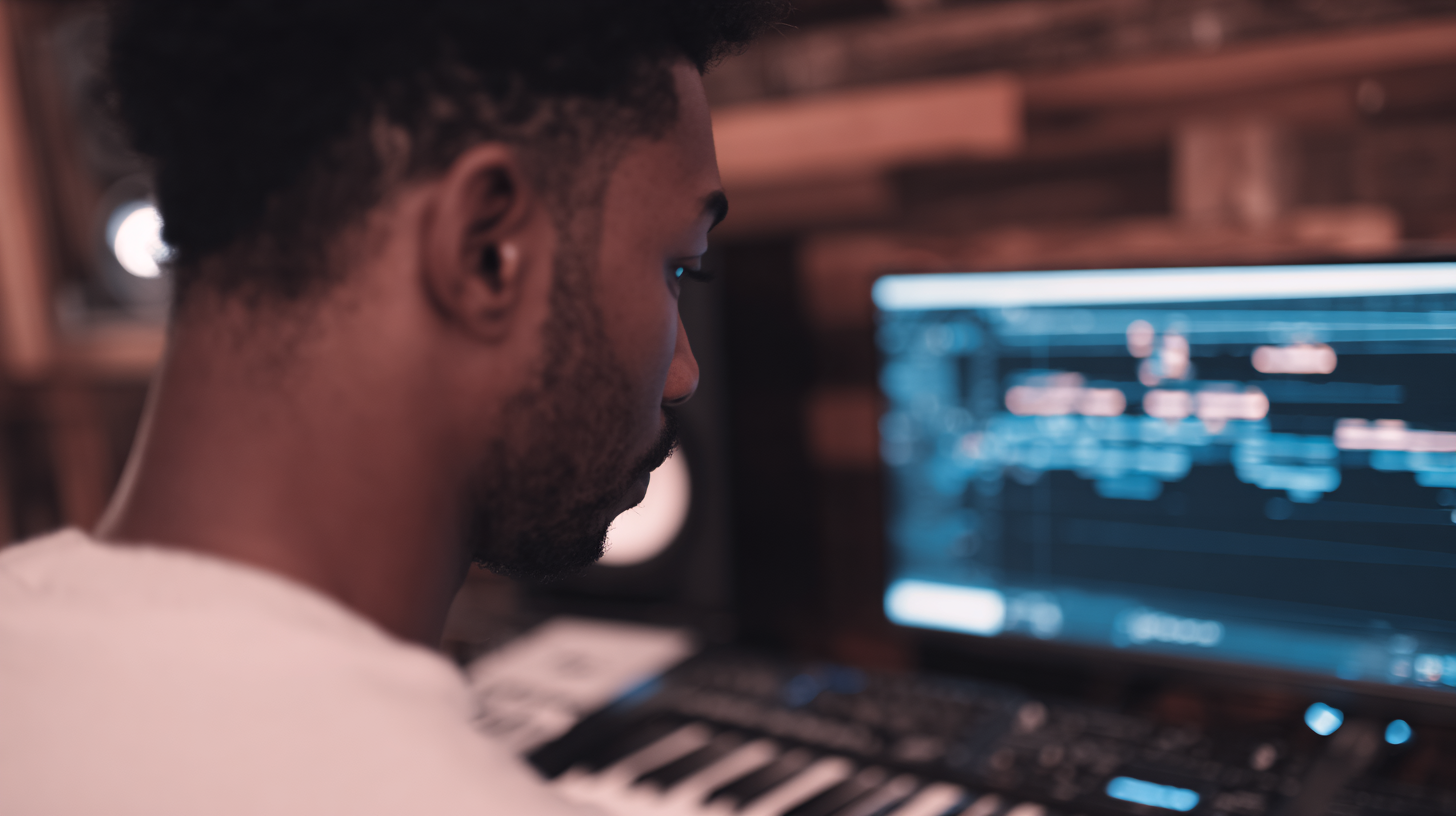
Timbre in Music: Creating Distinct Sounds in A Metal Mix
Nail The Mix Staff
Alright, let's talk timbre. You've heard the term, maybe even skimmed a textbook definition – "tone color" or "sound quality." Snooze. For us metal producers, timbre is way more visceral. It’s the gnarly character of a Peavey 6505 versus the classic bark of a Marshall JCM800. It's why an Ibanez with active Fishman Fluences sounds worlds apart from a Les Paul loaded with passive PAFs. It's the sonic fingerprint that makes your mix uniquely yours, or uniquely… well, someone else's if you're not careful.
Understanding and manipulating timbre is how you take a collection of recorded tracks and forge them into a cohesive, aggressive, and professional-sounding metal assault. It's not just about EQing out mud; it's about consciously shaping the character of every sound.
Gut Check: What Exactly IS Timbre in Metal?
Forget dusty academic definitions for a sec. In our world, timbre is the sum total of all the harmonic content and dynamic characteristics that make one sound distinct from another, even if they're playing the same note at the same volume. It’s the difference between a dry, direct guitar signal and that same signal re-amped through a cranked ENGL Fireball. It’s why a Zildjian A Custom crash shimmers differently than a dark, trashy Meinl Byzance.
Think about it:
- Guitars: A scooped, tight chug from an ESP loaded with EMG 81/85s through a Mesa/Boogie Dual Rectifier has a completely different timbre than a vintage Gibson SG through an Orange Rockerverb playing the same riff.
- Drums: A Tama Starclassic Bubinga snare tuned high and hit with a rimshot has a cutting, sharp timbre. A Ludwig Black Beauty tuned low and fat offers a warmer, rounder timbre.
- Vocals: A guttural growl has a dense, complex harmonic structure compared to a clean, soaring vocal melody, even from the same vocalist.
Timbre is what gives each instrument its voice and its place in the sonic landscape. Nail this, and your mixes will hit harder.
Axe Timbre: Making Your Guitars Scream (or Chug)
Guitars are the lifeblood of metal, and their timbre is front and center. Getting this right is non-negotiable.
The Source is King: Guitars, Amps, Cabs
You can't polish a turd, right? Well, you can, but it's still a turd. The initial timbre starts with the gear.
- Guitars & Pickups: An Ibanez RG with high-output active pickups like Fishman Fluence Moderns or EMG 81/85s will naturally have a tighter, more aggressive, and often brighter timbre than a mahogany-bodied Gibson with lower-output passive Seymour Duncan JB/Jazz pickups. Even string gauge and pick material (Tortex vs. Ultex, for example) play a role.
- Amps: This is HUGE. A Peavey 5150/6505+ has that signature saturated, mid-focused grind. A Mesa Dual Rectifier offers a chunkier, often more scooped low-end and searing top. An EVH 5150III can be incredibly versatile, from tight crunch to full-on devastation. Don't forget amp sims either – Neural DSP's Archetype series (Gojira, Nolly, Plini) or STL ToneHub provide a massive palette of amp timbres.
- Cabs & Speakers: The cab and speakers are arguably as important as the head. A Mesa Rectifier 4×12 loaded with Celestion Vintage 30s is a metal standard for a reason – that focused midrange punch. An Orange PPC412 might offer a slightly warmer, woodier timbre. Different speakers (e.g., Celestion Creambacks, Eminence DV-77s) within the same cab will also drastically alter the sound.
Mic Magic: Capturing the Aggression
How you mic that glorious amp rig massively impacts the captured timbre.
- The Usual Suspects: The Shure SM57 is the undisputed champ for a reason – its presence peak is perfect for guitar aggression. Combine it with a Sennheiser MD421 for added body and low-mid warmth, or a Royer R-121 ribbon mic (careful with the SPL!) for a smoother, darker character.
- Placement is Everything: Moving an SM57 just an inch across the speaker cone can change the timbre from bright and fizzy (center of the dust cap) to darker and fuller (edge of the cone). Angling the mic (like in the Fredman technique, using two SM57s, one on-axis and one at 45 degrees) introduces phase cancellations that can scoop out certain frequencies and enhance others, creating a unique timbral signature before you even touch an EQ. Blending these signals, maybe even with a room mic like a Neumann U87 clone for some air, gives you a ton of timbral options.
EQ Sculpting: More Than Just Scooping Mids
EQ isn't just for fixing problems; it's a primary tool for shaping timbre.
- Cutting Fizz & Mud: That nasty high-end fizz above 8kHz? Use a surgical EQ like FabFilter Pro-Q 3 with a narrow Q to notch it out. Boxiness around 300-500Hz? Gentle cuts here can clean things up. A high-pass filter (HPF) around 80-100Hz is almost always a good starting point to remove unnecessary low-end rumble.
- Adding Bite & Presence: A boost in the 2-5kHz range can bring out pick attack and aggression. Be careful not to overdo it and make things harsh.
- Character EQs: Plugins like the API 550A or Pultec EQP-1A (or their UAD/Waves emulations) can add their own analog-ish character. The Pultec trick of boosting and attenuating the same low frequency can do wonders for adding weight without mud.
Distortion & Saturation: The Harmonic Enhancers
Distortion is timbre modification. It adds harmonics, compresses, and fundamentally changes the character.
- Boost Pedals: The classic Ibanez TS9 or Maxon OD808 (or countless plugin emulations like the TSE 808) with the drive low, tone at noon, and level maxed, isn't just for more gain; it tightens the low end and pushes the mids of your amp, shaping its breakup timbre.
- Amp Sims (Again!): Beyond just mimicking amps, plugins like those from Neural DSP or Positive Grid BIAS AMP 2 let you swap virtual tubes, transformers, and EQs, offering insane timbral control.
- Saturation Plugins: For more subtle (or not-so-subtle) harmonic richness, plugins like FabFilter Saturn 2, Soundtoys Decapitator, or even the free Softube Saturation Knob can add warmth, grit, or aggressive bite. Try Saturn 2 on a "Warm Tape" setting for guitars to smooth out harshness and add glue. Decapitator’s "Punish" button… well, you know what that’s for.
Drum Timbre: The Foundation of Your Sonic Assault
The timbre of your drums dictates the punch, groove, and overall power of your rhythm section.
Shells, Heads, and Tuning: The Acoustic Core
It starts at the source.
- Shell Material: Birch shells (e.g., Tama Starclassic Performer) are known for their focused, punchy timbre with a natural scoop. Maple (e.g., Pearl Masters Maple Complete) is often warmer and more resonant. Bubinga (found in some high-end Tama kits) offers a deep, powerful low-end.
- Heads: Two-ply heads like Remo Pinstripes or Evans EC2s provide a fatter, more controlled timbre with less sustain, great for toms in metal. Single-ply heads like Remo Ambassadors or Evans G1s are brighter and more open. For snares, a Remo Controlled Sound (CS) Reverse Dot is a classic for focus and durability.
- Tuning: Higher tuning generally means a brighter, more cutting timbre. Lower tuning brings out body and resonance. Getting the resonant relationship between the top and bottom heads right is crucial.
Cymbals: From Bright Sizzle to Dark Wash
Cymbals are all about timbre. A bright, cutting Zildjian A Custom crash has a totally different harmonic makeup than a dark, complex Meinl Byzance Extra Dry crash. The alloy (B20 bronze vs. B8), hammering, and lathing all contribute to their unique sonic signatures. Think about how a Paiste Rude china pierces through a mix versus a more traditional Wuhan.
Mics and Placement: Capturing the Kit's Voice
- Kick: An Audix D6 or Shure Beta 52A inside the kick for attack and low-end punch. Maybe an AKG D112 for a classic thud. Often paired with a large-diaphragm FET condenser outside (like a Yamaha SubKick or even a homemade speaker mic with an NS-10 woofer) for sub frequencies.
- Snare: SM57 on top is standard. Add another SM57 or a small-diaphragm condenser like a Shure SM81 or Neumann KM184 on the bottom (polarity flipped!) to capture the snap of the snares.
- Toms: Sennheiser MD421s are classic for their low-mid punch. Audix D2s/D4s are also popular.
- Overheads: Matched pairs of large-diaphragm condensers (e.g., AKG C414s, Rode NT1s) or small-diaphragm condensers (e.g., Neumann KM184s, Oktava MK-012s) to capture the overall kit sound and cymbal shimmer. Placement (spaced pair, XY, ORTF) will affect the stereo image and perceived timbre.
- Room Mics: Crucial for metal! From U87s to affordable ribbons, capturing the room sound adds size and depth. Compressing these heavily (see below) can bring out a huge, aggressive ambience.
Processing for Impact: EQ and Dynamics
This is where you sculpt the raw capture.
- EQ:
- Kick: Boost around 60-80Hz for thump, cut around 300-500Hz to remove boxiness, boost 3-7kHz for click/beater attack (try a Slate Digital FG-N or API 550B plugin).
- Snare: Add body around 150-250Hz, crack around 5kHz, and manage ring with a narrow Q cut if needed.
- Toms: Similar to kick, but tune the body and attack frequencies to the specific tom.
- Overheads/Cymbals: High-pass to remove low-end rumble (maybe up to 300-400Hz). Gentle boosts for air (10kHz+) if needed. Cut harshness around 2-4kHz if cymbals are too washy.
- Compression:
- Kick/Snare: Fast attack, medium-fast release on something like an SSL G-Comp or a Distressor (or UAD emulations) to add punch and control peaks.
- Toms: Similar, or gate them tightly and use samples to enhance their timbre.
- Drum Bus: The SSL G-Master Buss Compressor is legendary for gluing the kit together. Try a 4:1 ratio, medium attack, fast release, getting 2-4dB of gain reduction.
- Parallel Compression: Blend a heavily compressed drum bus (think 1176 "all buttons in" mode) with the main drum bus for incredible sustain and aggression.
- Transient Designers: Plugins like the SPL Transient Designer (or Native Instruments Transient Master) are gold for shaping the attack and sustain of drums, directly impacting their perceived timbre. Want more snap from your snare? Boost the attack. Toms too ringy? Reduce the sustain.
Bass Timbre: The Low-End Rumble and Grind
A killer metal bass tone needs to be felt as much as heard, providing a solid foundation and often adding its own layer of aggression.
Instrument & Amp: The Tonal Bedrock
- Bass Guitar: A Fender Precision Bass is a workhorse for its solid, punchy mids. A Jazz Bass offers more tonal variation. Modern basses like Dingwalls or Spectors with active electronics and multi-scale designs are popular for their clarity and powerful low-B strings. Fresh strings (e.g., D'Addario ProSteels, DR Hi-Beams) are essential for brightness and growl. Playing with a pick (like a Dunlop Tortex .88mm or 1.0mm) gives a sharper attack timbre than fingers.
- Amps: The Ampeg SVT is the undisputed king for classic rock and metal bass warmth and power. For modern metal, Darkglass preamps and amps (like the Microtubes 900 or Alpha Omega series) are hugely popular for their built-in distortion and aggressive, clanky timbre.
DI, Amp, and Distortion: The Holy Trinity of Metal Bass
Often, the best metal bass sound is a blend of signals:
- Clean DI: A high-quality DI box (e.g., Radial JDI, SansAmp Bass Driver DI) captures the pure, clean fundamental tone of the bass. This provides the solid low-end foundation.
- Mic'd Amp: If you have a great amp like an SVT, mic it up (e.g., with an Electro-Voice RE20 or AKG D112) to capture its character and speaker movement.
- Distortion/Grit Layer: This is where the aggression comes from. You can get this from:
- The amp itself if it has good drive.
- A distortion pedal (e.g., Darkglass B3K/B7K, ProCo RAT).
- A plugin: Countless options here. Darkglass Ultra plugins, Neural DSP Parallax, FabFilter Saturn 2, or even a guitar amp sim like the TSE BOD for that SansAmp sound.
Blend these three (or sometimes just DI and distortion) to taste. Often, the DI handles the subs (high-pass the distorted signal) and the distortion handles the mids and highs for audibility on smaller speakers.
EQ to Fit and Fight
- Low-End Control: High-pass around 30-40Hz to remove useless sub-rumble. Find the sweet spot for fundamental weight (often 60-100Hz).
- Midrange Definition: This is where the bass lives in the mix and cuts through. Boosts between 700Hz and 2kHz can bring out pick attack, string noise ("clank"), and clarity against distorted guitars. Careful not to clash with the low-mids of the guitars (200-500Hz). Often, you'll scoop one to make room for the other.
- High-End Sizzle: If you want more string noise or air, a gentle boost above 5kHz can help, but be wary of hiss.
Vocal Timbre: From Guttural Roars to Soaring Cleans
The human voice is an incredibly versatile instrument, and its timbre can range from delicate to demonic.
The Performer's Palette: Technique is Timbre
This is paramount. A fry scream has a tight, raspy timbre. A false cord growl is often lower and more resonant. Inhaled screams have their own unique, often chaotic, harmonic structure. The control and consistency of the vocalist are the biggest factors in their recorded timbre.

100+ Insanely Detailed Mixing Tutorials
We leave absolutely nothing out, showing you every single step
Mic Selection: Capturing the Nuance
- Screams/Growls: Dynamic mics are king here. The Shure SM7B is an industry standard for its ability to handle high SPLs, its smooth response, and its excellent rejection. The Electro-Voice RE20 is another classic.
- Clean Vocals: Large-diaphragm condensers often shine here for their detail and air. A Neumann U87 Ai is a dream, but more affordable options like an Aston Spirit, Rode NT1-A, or even a well-placed Lewitt LCT 440 PURE can deliver great results.
- Proximity Effect: Getting closer to directional mics (cardioid, hypercardioid) boosts low frequencies, which can be used to add warmth and body, or can create mud if overdone.
Processing: Enhancing and Shaping Character
- EQ:
- High-Pass: Always! Around 80-120Hz depending on the voice and style.
- De-essing: Tame sibilance (harsh 's' and 't' sounds) usually between 5-10kHz with a dedicated de-esser plugin (like FabFilter Pro-DS or Waves Sibilance) or a dynamic EQ.
- Clarity/Presence: Boosts in the 1-5kHz range can help vocals cut. Air above 10kHz can add sheen to cleans.
- Mud/Boxiness: Cuts around 200-500Hz can clean up a muddy vocal.
- Compression: Essential for controlling dynamics and adding aggression. An 1176-style FET compressor (like the UAD 1176LN or Waves CLA-76) with a fast attack and release can really pin a scream in place and give it energy. For cleans, an LA-2A style opto-compressor can provide smoother, more transparent leveling. Often, you'll use multiple stages of compression.
- Saturation/Distortion: Subtle saturation (Soundtoys Decapitator on 'A' or 'N' mode, FabFilter Saturn 2) can add warmth, harmonics, and help the vocal sit in a dense mix. For aggressive vocals, you might even blend in a heavily distorted parallel track using a guitar amp sim or a dedicated distortion plugin.
- Effects: Reverb (Valhalla VintageVerb, FabFilter Pro-R) and delay (Soundtoys EchoBoy, FabFilter Timeless 3) create space and depth, which significantly influences the perceived timbre of the vocal within the mix. A short slap delay can thicken a vocal, while a long plate reverb can make it epic.
Bringing It All Together: The Art of Blending Timbres
Okay, so you’ve sculpted the timbre of individual instruments. Now what? The real magic happens when you make these distinct timbres work together. This is where your skill as a mixer truly shines.
- Contrast is Key: If your guitars are super bright and aggressive, maybe your cymbals should be a bit darker and washier to create separation. If your bass is very round and sub-heavy, your kick drum might need more click and less low-end boom to differentiate.
- Creating Space: Different timbres naturally occupy different frequency ranges. Understanding this helps you carve out space for each element. For example, the mid-scoop in heavy guitars isn't just a trope; it makes room for the snare drum's body and the vocal's core frequencies.
- The Pro Touch: This is where watching pros navigate these decisions becomes invaluable. On Nail The Mix, you get to see exactly how producers like Joey Sturgis, Will Putney, or Jens Bogren make these choices, dial in tones, and blend disparate timbres into a cohesive, brutal mix. They explain why they're using specific gear, plugins like the JST Bus Glue series or their custom vocal chains, and settings to shape the timbre of each element. Want to see how they build those massive soundscapes from the ground up and make everything sit perfectly? That's what you get.
Final Thoughts: Timbre is YOUR Sound
Understanding timbre isn't just academic; it's fundamental to crafting your signature sound. It's about making conscious choices with your gear, your mics, your processing – every step of the way. Don't just throw an SM57 on a cab because "that's what everyone does." Ask why. Listen to how moving it changes the sound. Experiment with different saturation plugins on your bass DI. Try different cymbal combinations.
The more you explore and consciously manipulate timbre, the more control you'll have over your mixes, and the closer you'll get to achieving those brutal, professional metal sounds you hear on your favorite records. Now go make some noise!
Get a new set of multi-tracks every month from a world-class artist, a livestream with the producer who mixed it, 100+ tutorials, our exclusive plugins and more
Get Started for $1





